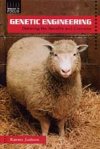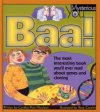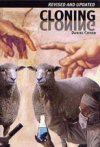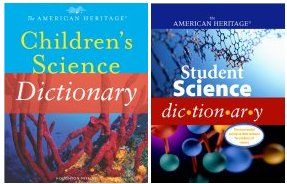Animal Clones: Double Trouble? Additional Information
Sohn, Emily. 2003. Like mother, like daughter. Science News for Kids (Aug. 13). Available
at http://www.sciencenewsforkids.org/articles/20030813/Note2.asp.
Travis, John. 2001. Dolly was lucky: Scientists warn that cloning is too dangerous for people. Science News 160(Oct. 20):250-252. Available at http://www.sciencenews.org/20011020/bob15.asp.
______. 1997. A fantastical experiment: The science behind the controversial cloning of Dolly. Science News 151(April 5):214-216. Available at http://www.sciencenews.org/sn_arc97/4_5_97/bob1.htm.
You can learn more about DNA at www.thetech.org/exhibits_events/online/genome/(Tech Museum of Innovation, San Jose, Calif.).
For an introduction to cloning, see gslc.genetics.utah.edu/units/cloning/whatiscloning/ (Genetic Science Learning Center at the Eccles Institute of Human Genetics, University of
Utah) or www.ornl.gov/sci/techresources/Human_Genome/elsi/cloning.shtml (Human Genome Project).
Additional information about cloning white-tailed deer can be found at www.cvm.tamu.edu/news/releases/deer_clone.shtml. Information about the first cloning of a cat is available at www.tamu.edu/aggiedaily/press/020214cc.html.
Books recommended by SearchIt!Science:
 |
Genetic Engineering: Debating the Benefits and Concerns — Karen Judso
Published by Enslow Publishers, 2001.
In 1997, a sheep named Dolly was born in Scotland. The world paid attention because Dolly was the product of cloning. She didn’t have a father, only a mother. Karen Judson investigates the research, benefits, and concerns of this and other types of genetic engineering. Ethical, legal, and social issues are presented to the reader from scientific, medical, and civilian viewpoints. From genetically engineered vegetables to the potential genetic engineering of human beings, Judson provides the research and information readers to consider to form an opinion about these scientific breakthroughs. |
 |
Baa!: The Most Interesting Book You’ll Ever Read about Genetics and Cloning — Cynthia Pratt Nicolson
Published by Kids Can Press, 2001.
You may have heard recent news about scientists cloning a heep, and other scientists “mapping the human genome.” If you thought cloning was something out of bad science fiction movies, and genes something that you wear on your legs, this book is perfect to get you up to speed on the science of genetics. Learn about the early scientists who first studied genetics, genetic diseases and how they can be stopped, and where we are and where we’re going with the science of cloning. |
 |
Cloning — Daniel Cohen
Published by Twenty-First Century Books/Millbrook Press, 1998.
For many, the idea of cloning is a disturbing idea. Why are we so fascinated by this idea? Has science gone too far? Learn about the history, current developments, and future of cloning. Examine the scientific issues and ethical concerns involved in cloning, recombinant DNA, and gene therapy. When Dolly, the cloned lamb, was introduced to the world, many were shocked to know that this was not the first cloning. It surely will not be the last. Explore the concerns about this technology to humans. Decide for yourself how you feel about this controversial topic. |
Power Words
antibiotic A drug used to treat of prevent a disease that is caused by bacteria or other germs that cause disease. Some antibiotics are made in nature by organisms such as molds. Penicillin is a kind of antibiotic.
clone A living thing that is a copy of another. A cell, a group of cells, or a whole organism can be a clone. Scientists make clones of cells to produce natural substances that are normally made by the body and use them to treat disease.
chromosome A tiny, thread-like structure in each cell of a living thing. Chromosomes carry the genes that pass on hereditary traits, such as eye color or the color of an animal’s coat, from parents to offspring.
DNA Short for deoxyribonucleic acid. The material that makes up the genes and that is found in all cells. DNA controls the function of all the cells in the body. DNA in the body consists of two thread-like strands that are linked together in the shape of a double helix.
embryo 1. an animal in the earliest stages of growth, just after an egg has been fertilized. 2. A plant in the earliest stage of growth, when it is contained within a seed.
Copyright © 2002, 2003 Houghton-Mifflin Company. All rights reserved. Used with permission.
